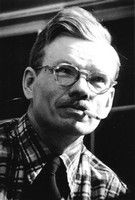Geometry & Abstraction Opens at ACME Fine Art, Boston
17 November - 23 December, 2006
ACME Fine Art’s exhibition titled Geometry & Abstraction will be a visual essay on the use of geometry by twentieth century American Modern artists to give form to their artistic ideas. The exhibition will include painting and sculpture by more than a dozen accomplished artists. The level of abstraction will range from cubism, to neo-plasticism, to minimalism. In some cases the geometric aspects of a piece may itself be an abstract notion, such as when a cubist painting by Kenneth Stubbs utilizes the golden section as its principal organizing concept. In other cases, in work by Ilya Bolotowsky or James Rosati, the artist studies -even celebrates- the juxtaposition of basic geometric forms in two or three-dimensional space. Other featured artists will include: Charles Green Shaw, Michael Loew, Raymond Jonson, Burgoyne Diller, Ray Parker, Myron Stout, Giorgio Cavallon, Peter Busa, Ralph Coburn, Murray Hantman, Panos Ghikas, Jim Gahagan, Haynes Ownby, and George Lloyd.
While the devices, means, and even the geometric forms themselves may in some cases bear a certain resemblance to each other, each of the artist’s intents is to some extent unique. The following excerpts from some of the artists’ statements about their own work demonstrate the variety of intents expressed in the artists’ own words:
Raymond Jonson - “It has been my hope to so purify, simplify, and organize a work that it expresses completely my reaction, or emotion, or sensation, in regard to nature, life…even to the things that are not visible but have a profound emotional reaction upon one.”
Michael Loew - “…geometric shapes are not necessarily clear. When things are circumspect, or physically clear, it is a purely optical phenomenon. It is a form of uncertainty.” “For me the use of the rectangle or square…heightens the intensity of the painting experience. In part because of the very hazards involved: the form, while seemingly a curb or a dam, may liberate the unforeseen.”
Ilya Bolotowsky - “In the early forties I still used diagonals. A diagonal, of course, creates ambivalent depth- diagonal depth might go either back or forth. It’s not like perspective which goes only one way. …I had to give up diagonals because the space going back and forth was becoming too violent. The diagonal space was getting in the way of the tension on the flat surface. You cannot get an absolute flatness in painting because of the interplay of the colors, the way they feel to us. But you can achieve relative flatness, within which the colors and the proportions might push back and forth creating an extra tension. This tense flatness must not destroy the overall flat tension, which, to my mind, in two-dimensional painting is the most important thing.”
James Rosati - “Time gave me the courage to attempt more daring things in a pure and much simpler way. When I started I couldn’t have thought that organizing just the purest, simplest forms having no relationship to anything but themselves, would allow me to express an inner human feeling. I can do it now with much more clarity. I don’t hesitate anymore about the concept. It comes first, then I let the concept dictate whether it seems to lend itself to stone, or to metal. I don’t concern myself about a particular style or way of making sculpture. It took years. All of the experiences have added up. Somehow, I think I’ve come to a point now where I feel like I am a more complete sculptor.” “…I worked not with the purpose that this critic likes this kind of work, but for the purpose of what was going on right on the workbench…and to make the best damn thing I could possibly make. It had no purpose for existing other than the fact that it expressed at a particular time something very definitely within me.”
Raymond Jonson - “I think some years ago I created my own environment and I am still working in it. You might call it an inner environment if you like. My works are really contrasts to the environment in which they exist. Around us we have realism, strife, pain and greed. I wish to present the other side of life, namely the feeling of order, joy and freedom.”
While at first glance one might consider the creations of these artists to be primarily derived from a purely cerebral process, it is fascinating to consider how important it was to many of them to convey sensation, emotion, and a sense of the artist’s inner self. Certainly the concepts of synthesis and purity seem to be essential common denominators as well. Despite the similarities and divergences between the artists’ intent, and what can be clearly seen in the resulting artwork, the use of basic geometric elements to give form to their work is unanimous among the artists and the work selected for this exhibition.
GEOMETRY & ABSTRACTION will be on view at ACME Fine Art’s 38 Newbury Street, Boston galleries from 17 November through 23 December 2006. An opening reception will be held from 6-8 p.m. on Friday 17 November.
Please contact the gallery at 617.585.9551, or via e-mail at info@acmefineart.com for further information.
|

